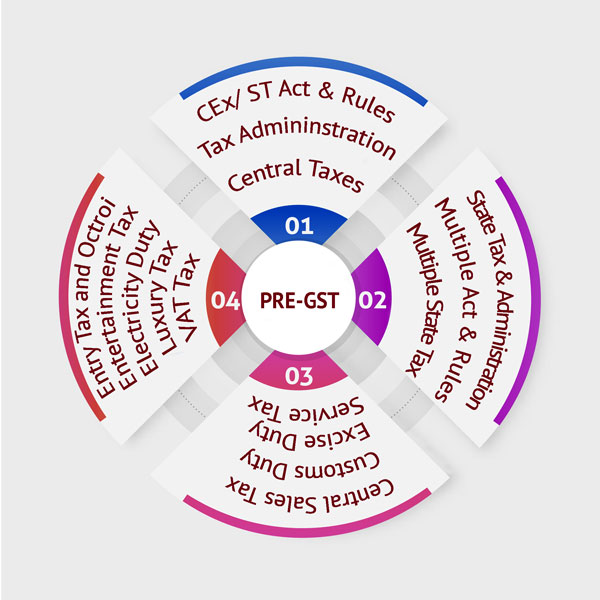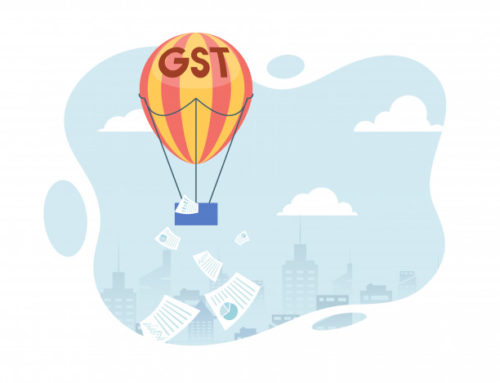GST is consumption tax or indirect tax levied on the supply of goods and services. As the tax is refunded is to all parties at various stages of production other than the final consumer of product.
Parliament passed the GST law on 29th March 2017 and came into action on 1st July 2017. GST is one indirect tax for whole country.
In other word or for the sake of understanding for people who dont know about GST . GST is any tax applied on supply of goods or services or both .

Before GST Rollout

Before GST there were so many indirect tax levied by both state and center . Interstate sale of goods was taxed by the Center. CST (Central State Tax) was applicable in case of interstate sale of goods.
The GST replaces numerous different indirect taxes such as:
- Central Excise Duty
- Service Tax
- Countervailing Duty
- Special Countervailing Duty
- Value Added Tax (VAT)
- Central Sales Tax (CST)
- Octroi
- Entertainment Tax
- Entry Tax
- Purchase Tax
- Luxury Tax
- Advertisement taxes
- Taxes applicable to lotteries.
History Of GST
Components of GST
The component of GST are as followed:
- CGST: Collected by Central government on an intra state sale.
- SGST: Collected by State government on an intra state sale.
- IGST: Collected by Central government for inter state sale.
New Regime v/s Old Regime
| Transaction | New Regime | Old Regime | Revenue |
|---|---|---|---|
| Sale within state | CGST+SGST | VAT + Central Excise | Collected by Center and State only |
| Sale to another state | IGST | Central State Tax+ Excise | Center will share the IGST revenue based on the destination of goods. |
What changes GST introduced in economical growth of India?
Across the global crisis India raised a light of hope with various growth strategies like MAKE IN INDIA , DIGITAL INDIA and GST change has brought drastic change in the Indian economy. GST is same strategy introduced to control Taxation in India. India has always played an important role in Global Economic Growth. Not only India has benefited by introducing GST but neighboring countries are also benefited by GST. This indirect tax system under GST has improved the collection of taxes as well as boosted the development of the Indian economy by removing the indirect tax barriers between states and integrating the country through a uniform tax rate.
Benefits of GST on Indian economy :
1) Removal of bundled indirect taxes.
2) Easy simplified tax calculations.
3) Low manufacturing costs.
4) The low burden on consumers.
5) Increase demand & supply.
6) Boosting the Indian economy and neighboring countries.
7) Stopping the circulation of black money.
Changes experienced after GST rollout
The new gst tax regime rollout is meant to integrate various indirect tax under one tax structure unifying the nation as an one market. These roll out is game changing reform for the Indian economy cascading the effect of tax.
1) No indirect taxation
A sudden increase in taxation led the taxpayer to worry about price rise as this will be the result if tax increases. Previously taxpayers won’t know the overlapping of taxes. But after GST rollout, payers at least know about what tax they are paying. Now the consumer won’t have to worry about the overlapping tax as new regime unifies all taxes.
2) Price rise check
Now the tax paid for inputs is taken off taxes to be paid for the final product, or output. This way more people pay taxes instead of the consumer bearing the burden of taxes levied at every step of manufacturing.
3) Taxation becomes digital, so are the tax payers
After roll out, Every tax payer has to file the tax or income tax digitally advancing them and thier equipments according to gst changes.
4) Production Increase
The roll out changed the way tax was levied to the final customer. Now as the trader or manufacturer doesnt have to pay indirect tax hence its leads to more production and competitiveness.
5) Transportation
The air travel and local cabs fare have been reduced by 5% .so this is good news for the people in this sector.


